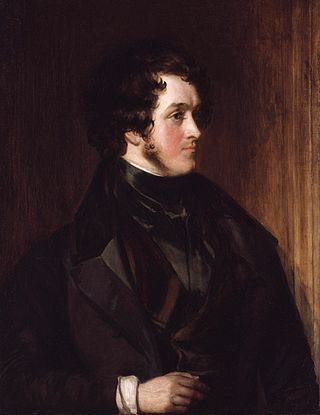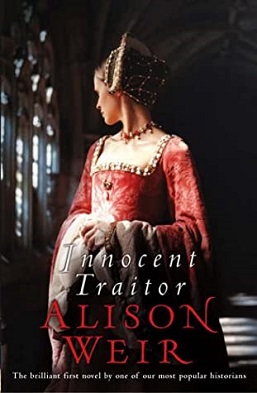
Mary I, also known as Mary Tudor, and as "Bloody Mary" by her Protestant opponents, was Queen of England and Ireland from July 1553 and Queen of Spain as the wife of King Philip II from January 1556 until her death in 1558. She made vigorous attempts to reverse the English Reformation, which had begun during the reign of her father, King Henry VIII. Her attempt to restore to the Church the property confiscated in the previous two reigns was largely thwarted by Parliament, but during her five-year reign, Mary had over 280 religious dissenters burned at the stake in the Marian persecutions.

The House of Tudor was an English and Welsh dynasty that held the throne of England from 1485 to 1603. They descended from the Tudors of Penmynydd, a Welsh noble family, and Catherine of Valois. The Tudor monarchs ruled the Kingdom of England and the Lordship of Ireland for 118 years with five monarchs: Henry VII, Henry VIII, Edward VI, Mary I and Elizabeth I. The Tudors succeeded the House of Plantagenet as rulers of the Kingdom of England, and were succeeded by the Scottish House of Stuart. The first Tudor monarch, Henry VII, descended through his mother from the House of Beaufort, a legitimised branch of the English royal House of Lancaster, a cadet house of the Plantagenets. The Tudor family rose to power and started the Tudor period in the wake of the Wars of the Roses (1455–1487), which left the main House of Lancaster extinct in the male line.

Katherine Seymour, Countess of Hertford was a younger sister of Lady Jane Grey.

Lord Guildford Dudley was an English nobleman who was married to Lady Jane Grey. She occupied the English throne from 10 July until 19 July 1553, having been declared the heir of King Edward VI. Guildford Dudley had a humanist education and married Jane in a magnificent celebration about six weeks before the King's death. After Guildford's father, the Duke of Northumberland, had engineered Jane's accession, Jane and Guildford spent her brief rule residing in the Tower of London. They were still in the Tower when their regime collapsed and remained there in different quarters as prisoners. They were condemned to death for high treason in November 1553. Queen Mary I was inclined to spare their lives, but Thomas Wyatt's rebellion against Mary's plans to marry Philip of Spain led to the young couple's execution, a measure that was widely seen as unduly harsh.

Lady Jane is a 1986 British costume-historical drama romance film, directed by Trevor Nunn, written by David Edgar, and starring Helena Bonham Carter as the title character. It tells the story of Lady Jane Grey, her marriage to Lord Guildford Dudley, and her reign as the "Nine Days' Queen" following the death of Edward VI of England.

William Harrison Ainsworth was an English historical novelist born at King Street in Manchester. He trained as a lawyer, but the legal profession held no attraction for him. While completing his legal studies in London he met the publisher John Ebers, at that time manager of the King's Theatre, Haymarket. Ebers introduced Ainsworth to literary and dramatic circles, and to his daughter, who became Ainsworth's wife.

Frances Grey, Duchess of Suffolk, was an English noblewoman. She was the second child and eldest daughter of King Henry VIII's younger sister, Princess Mary, and Charles Brandon, 1st Duke of Suffolk. She was the mother of Lady Jane Grey, de facto Queen of England and Ireland for nine days, as well as Lady Katherine Grey and Lady Mary Grey.

Lady Jane Grey, also known as Lady Jane Dudley after her marriage and as the "Nine Days' Queen", was an English noblewoman who was proclaimed Queen of England and Ireland on 10 July 1553 and reigned until she was deposed by her cousin, Mary I, on 19 July 1553.

Innocent Traitor: A Novel of Lady Jane Grey is a historical novel by Alison Weir, published in 2006. It is the story of Lady Jane Grey, who was Queen of England for nine days in 1553. Previously known for her non-fiction publications, Innocent Traitor was Weir's first work of fiction; she later spoke of its impact on her, saying she "learned so much from the editorial process about the writing and craft of fiction."

Lady Jane Grey, 16th-century claimant to the English throne, has left an abiding impression in English literature and romance. The limited amount of material from which to construct a source-based biography of her has not stopped authors of all ages filling the gaps with the fruits of their imagination.

Windsor Castle is a novel by William Harrison Ainsworth serially published in 1842. It is a historical romance with gothic elements that depicts Henry VIII's pursuit of Anne Boleyn. Intertwined with the story are the actions of Herne the Hunter, a legendary ghost that haunts Windsor woods.

The Miser's Daughter is a novel by William Harrison Ainsworth serially published in 1842. It is a historical romance that describes a young man pursuing the daughter of a miserly rich man during the 18th century.

Jack Sheppard is a novel by William Harrison Ainsworth serially published in Bentley's Miscellany from 1839 to 1840, with illustrations by George Cruikshank. It is a historical romance and a Newgate novel based on the real life of the 18th-century criminal Jack Sheppard.

The novel Guy Fawkes first appeared as a serial in Bentley's Miscellany, between January and November 1840. It was subsequently published as a three-volume set in July 1841, with illustrations by George Cruikshank. The first of William Harrison Ainsworth's seven "Lancashire novels", the story is based on the Gunpowder Plot of 1605, an unsuccessful attempt to blow up the Houses of Parliament. Ainsworth relied heavily on historical documents describing the trial and execution of the conspirators, of whom Fawkes was one, but he also embellished the known facts. He invented the character of Viviana Radcliffe, daughter of the prominent Radcliffe family of Ordsall Hall – who becomes Fawkes's wife – and introduced gothic and supernatural elements into the story, such as the ability of the alchemist, John Dee, to raise the spirits of the dead.

St. James's is a historical novel by William Harrison Ainsworth serially published in 1844. It describes the events surrounding the end of Queen Anne's reign and the dispute between the Duke and Duchess of Marlborough with two Tories for influence over the queen.

Old St. Paul's, also titled Old Saint Paul's: A Tale of the Plague and the Fire, is a novel by William Harrison Ainsworth serially published in 1841. It is a historical romance that describes the events of the Great Plague of London and the Great Fire of London. It was the basis for the 1914 silent film Old St. Paul's.

Rookwood is a novel by William Harrison Ainsworth published in 1834. It is a historical and gothic romance that describes a dispute over the legitimate claim for the inheritance of Rookwood Place and the Rookwood family name.
Henry Dudley was an English soldier and an elder brother of Queen Elizabeth I's favourite, Robert Dudley, Earl of Leicester. Their father was John Dudley, Duke of Northumberland, who led the English government from 1550 to 1553 under Edward VI and unsuccessfully tried to establish Lady Jane Grey on the English throne after the King's death in July 1553. For his participation in this venture Henry Dudley was imprisoned in the Tower of London and condemned to death, but pardoned.

The Constable of the Tower is an 1861 historical novel by the British writher William Harrison Ainsworth. Originally serialised in Bentley's Miscellany it was then published in three volumes. It is set in Tudor England following the death of Henry VIII and focuses in particular in the rule of the Lord Protector Duke of Somerset and his subsequent downfall, imprisonment in the Tower of London and execution in 1552. The illustrations were provided by John Gilbert. The sales of the novel were considered disappointing by his publishers Chapman and Hall.

Cardinal Pole is an 1863 historical novel by the British author William Harrison Ainsworth. After being serialised in Bentley's Miscellany it was published in three volumes by Chapman and Hall. It set during the mid-sixteenth century and revolves around cardinal Reginald Pole during the reign of Mary I of England. It functions as an effective sequel to the author's 1840 novel The Tower of London.























